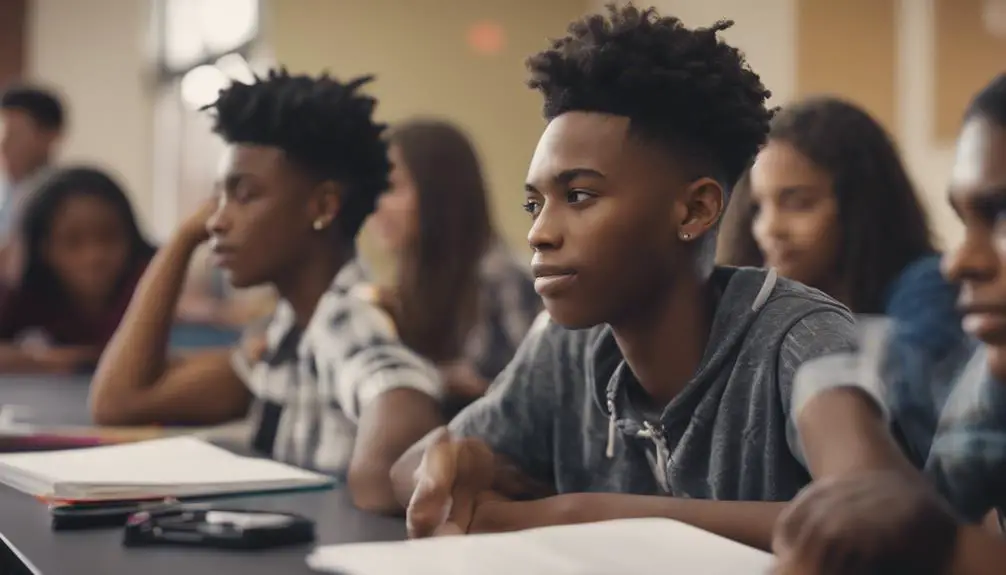It is easy to feel overwhelmed when you first start teaching. You are thrown into the deep end of the pool and expected to be an expert within your first few months on the job. In order to do this, many teachers turn to other education professionals for advice and guidance as they navigate their new career paths. Unfortunately, those same people can often offer bad advice that isn’t always helpful or accurate… myths about classroom management. Here are some common myths about classroom management:
An important thing to remember about the myths surrounding classroom management is that they are exactly just that -myths. Teachers can implement successful classroom management techniques by recognizing their students as individuals who all learn in different ways.
Myths About Classroom Management
Every profession has its own set of myths. Some myths are founded on misunderstandings, others as a means to help new people get through the training and acclimatize to their jobs. However, some myths become part of how we think about things, and they only serve to hold us back from becoming the great teachers we can be.
I’m going to lay out ten myths about classroom management I’ve come across throughout my teaching career, and why they are false.
1) Children should know that there is a time for everything, so you should tell them once and then punish them if they don’t do as they’re told
This is the biggest myth about classroom management, and it gets perpetuated because of our own need to feel comfortable in our classrooms. When I first started teaching, I had this mindset also, but soon enough realized that children will not magically know how you want them to behave. The only way they are going to change their behavior is if you model what you want, set clear expectations, and give them opportunities to practice within the boundaries of your rules.
Be careful about teaching children that there’s a time for everything though because they will start to expect this in every setting. If you do allow free-time activities or interruptions during work time, be very clear with children that this is different from your usual rules.
2) I’m in charge; my students need to learn to respect me
Respect has to be earned, not granted with a title like ‘teacher’. Respect is something children give when they feel valued by you. If children think you are fair and care about them, most will give you the same consideration in return. Remember, your authority is given to you by the children in the name of their safety and wellbeing. Your students should not have to ‘respect’ you just because you are a teacher.
3) I’m going to show them who’s boss from day one
This thinking reflects a power-over mindset that actually works against creating a good learning environment. This sort of thinking shuts down children’s ideas, teaches them to only follow directions, and leaves no room for your students to feel like they are part of the community you are building in your classroom.
4) The only way I can show them who’s boss is by using fear tactics
Fear tactics are unpredictable, which means they never work. They end up teaching children exactly what not to do, rather than what you want them to do. Unless a child is an immediate safety risk, always start with a warning before moving on to any sort of punishment.
5) I’m going to give them rules and make sure they understand the consequences if they don’t follow them
Break the rules down into manageable chunks and allow children time to practice skills within your set boundaries. Learning takes practice, so don’t just throw them in the deep end of the pool! Children cope better with change when they can see it coming, giving them warning about changes lets them know that you care about their ability to adjust.
6) I’m going to tell them off if they try to break a rule
Rather than focusing on punishing when children do something wrong, it is better to focus your energy on rewarding children when they do the right thing through positive reinforcement. You must give all students time in class to work towards the rules, rather than expecting them to automatically know how you want them to behave. You can let children know when they are doing a good job by using positive comments and encouragement, as well as letting loose with praise once in a while.
7) I’m going to keep the class busy every minute of the day
There will be times that students need a moment or two to concentrate or re-group, so it is important to be flexible in your teaching. For children moving from one activity to another, make sure you are giving them enough time to transition. You can also use these moments to check for understanding or get input from children on the next steps of the day’s work.
8) When they misbehave, I’m going to give them detention
If you are giving children consequences for breaking the rules, try to focus on natural consequences instead of punishments whenever possible. These let students learn from their mistakes without feeling like they are being punished by you. For example, if a child chooses not to do her homework and gets a bad grade as a result, she will learn from her mistake and hopefully not repeat it.
9) I’m going to use my special tricks to get them motivated
You don’t need bells or whistles in class, just a firm grasp of classroom management principles and the ability to recognize children’s needs for autonomy and socialization. You can keep your students on task by using positive verbal cues and nonverbal strategies, like pointing or hand signals instead of shouting.
10) I’m going to be the one who makes all the rules in my classroom
When students take part in making up their own class rules, they are more likely to follow them because they helped make them! They will also feel like they have more say in what happens within your classroom, which increases their sense of belonging. It’s also an excellent way to get the whole class working together.
11) I never know what to do when they act up
Before you take charge during problem behavior, stop for a moment and think about what skill you could teach them that might help them behave better. You might find that they just need more practice at the skill they are trying to learn, or perhaps they need to be reminded of it. If you can figure out what helps children act appropriately, you’ll be able to defuse situations before they escalate.
What Constitute Successful Classroom Management Techniques?
1. Be Prepared and Organized
It’s important to be prepared and organized before the school year starts, as this is when classroom management will become difficult if you aren’t prepared or if your lesson plans are not laid out clearly. Have all of your materials ready for the start of school, and be organized in how you lay out your plan for the semester.
2. Use a Classroom Management System
A classroom management system will help you keep track of all students by name and seat number to ensure they are doing what they should be when they should be. Whether this is a paper-based system or an electronic one, it’s important to have a system that works best for you and your students. Check out the components of a classroom management system here.
3. Frequent Feedback
When using a classroom management system, be sure to check in with each of your students regularly or after specific tasks are completed. Frequent feedback will let you know if everyone is doing what they should be, and also help you to figure out who may need a little extra help or encouragement. Additionally, this will help students feel more accomplished and that their work is being noticed by you as the teacher.
4. Be Respectful
Teachers need to be disciplined but still, show respect towards each of their students. This can be challenging at times depending on what kind of students you have in your classroom, but it’s important to stay calm and patient even if a student is being disrespectful.
5. Establish Clear Classroom Rules
Before the school year begins, establish clear rules for each of your classes that are positive guidelines for how students should act while they are there. For example, do not swear, raise your hand if you want to speak, be kind to others… Find out how important classroom rules are and what to consider when making them here.
6. Give Students Ways to Help & Lead
Classrooms work best when students are given ways they can help and lead. This doesn’t mean that you don’t lead the classroom yourself, but that you give students different roles in the classroom so they can feel like an integral part of your classroom.
7. Use Feedback & Praise Wisely
Sometimes using this kind of feedback and praise is not worth the trouble it could cause, so it’s important to think about which kinds of students you have in front of you before giving too much feedback or saying, “Good job!” so that you know how they will react to your words. For more information on how to use praise effectively, click here.
8. Keep Things Visually Appealing
The look of a classroom can go a long way towards creating an environment that students want to be in and that they learn best within. Try having different things on each table or shelf, decorate the room… these things will make your classroom more visually appealing and make it easier to keep clean and organized.
9. Praise Pro-social Behavior
When students are doing good things like helping, listening, and obeying the rules, make sure to praise that behavior and let them know that you noticed and appreciate their hard work and effort towards doing it right! This will also encourage other students to follow suit when they see that the behavior is being noticed and appreciated. For more information on how to use praise effectively, click here.
10. Reward Pro-social Behavior
When students do well, rewarding them for their efforts can encourage them to keep up with that good work and help other students see what they should be doing as well. This reward does not have to be big or expensive, sometimes a small token like an ice cream coupon can be enough to encourage students. Check out our article on how to use rewards here.
Final Thoughts
Learning how to manage a classroom can be challenging. If you are new or have been teaching for some time, the tips in this article will help you overcome misconceptions about what it means to be an effective teacher. We hope that these myths debunked at least one of your worries and gave you actionable steps on improving your classroom management skills! Read more of our articles.














